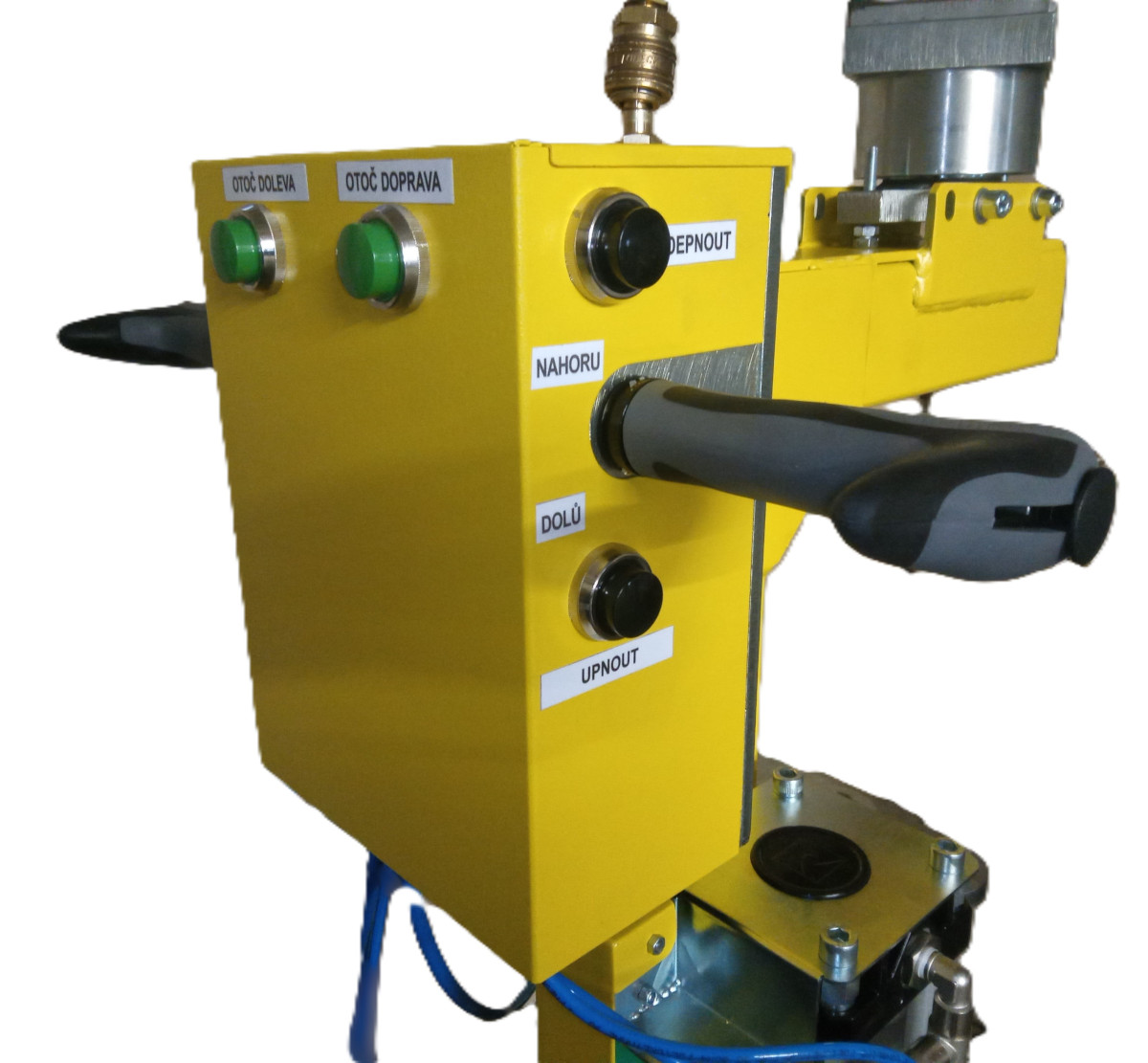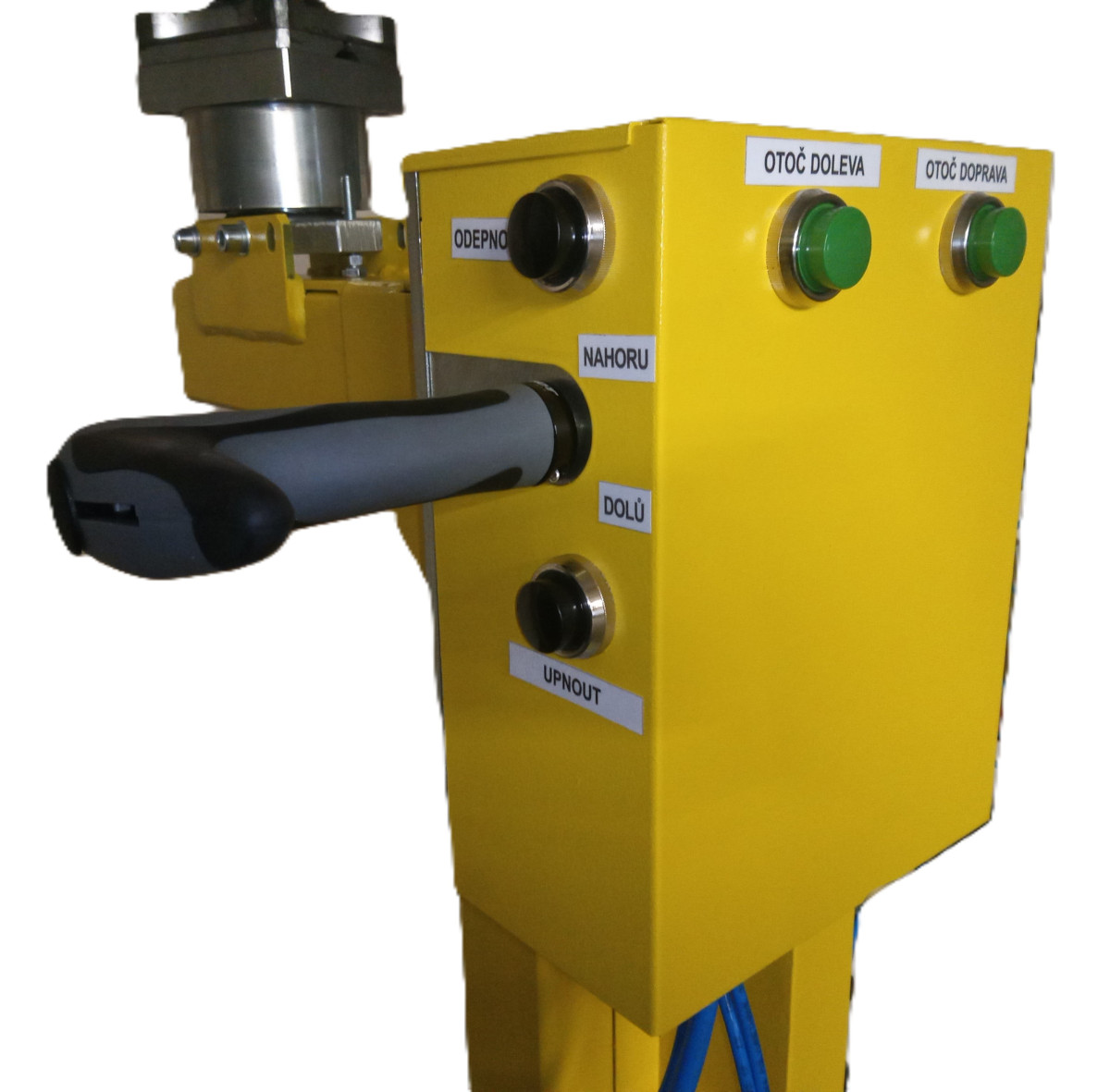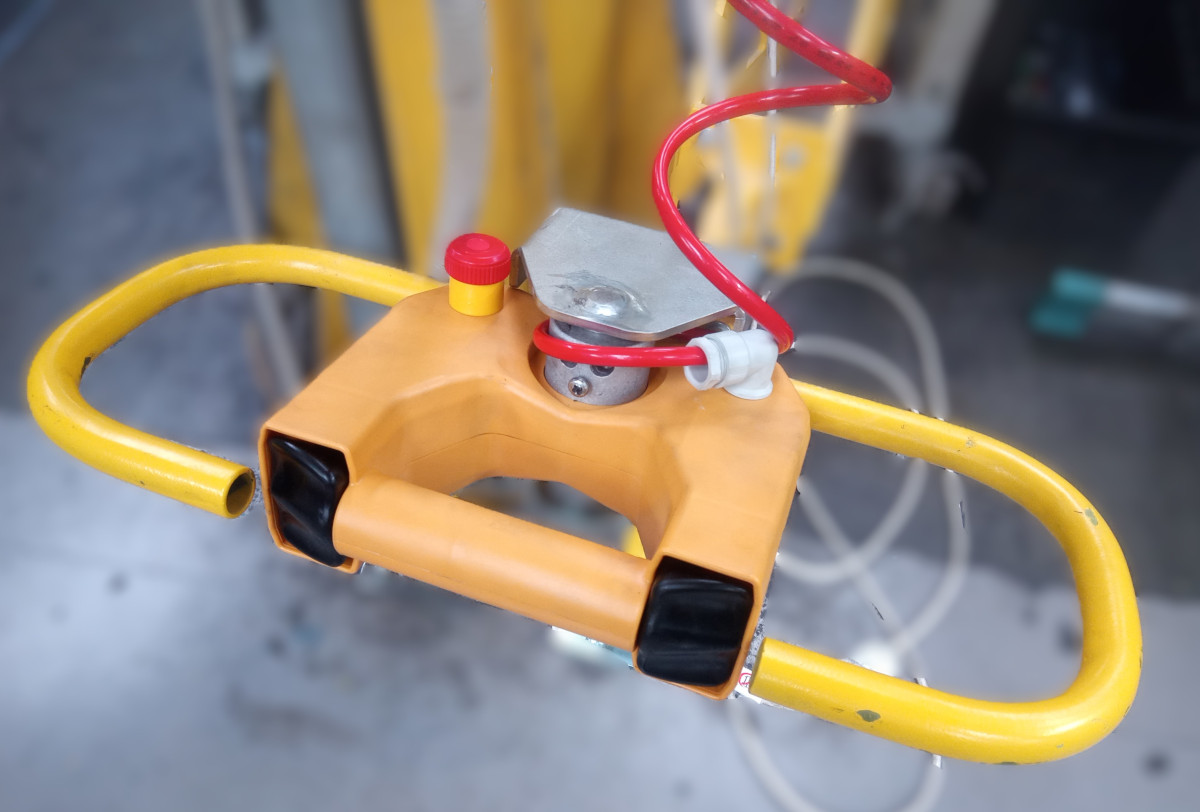13.Jun 2025
Ergonomics and Health Protection when Working with Manipulators
Modern industrial production cannot do without efficient material movement. In an environment where heavy or repeatedly lifted objects must be handled daily, workplace ergonomics is absolutely essential. It is necessary to ensure operator comfort, the long-term health of workers, operational performance, and the real costs associated with poor ergonomics.
At TRIOM, we have learned that seemingly “small details”—such as the height of the control handle, joint resistance, or the tilt of the control panel—determine whether the operator will work with the manipulator willingly or reluctantly. This affects not only shift productivity but also turnover, absenteeism, and output quality.
Repetitive Strain Is the Silent Killer of Productivity
Repetitive manual handling is one of the most common causes of musculoskeletal disorders (MSDs). According to occupational health and safety data, it is one of the most expensive problems, which does not arise overnight but gradually—at the cost of daily exertion.
Typical issues:
- lifting loads outside the body’s axis,
- working with outstretched arms,
- trunk rotation during grasping,
- the need to control multiple elements simultaneously,
- absence of breaks or varied movements.
If a handling system is designed without regard for ergonomics, it becomes an “invisible stressor.” It does not cause an injury immediately—but over time it reduces the worker’s ability to perform.
What Does an Ergonomic Manipulator Look Like?
Ergonomics is not aesthetics. It is the purposeful adaptation of a technical system to the biological limits of the human body. In the context of manipulators, this is reflected in the following principles:
1. Correct Control Position
Handles and controls must be at the natural arm-reach height—between 80 and 120 cm above the floor. Controls above head height or below waist level always pose a risk.

2. Minimal Movement Resistance
The operator should not have to “push” the device but rather guide it. This reduces physical fatigue and the risk of errors.
3. Feedback
A quality manipulator responds to operator inputs smoothly and clearly. A good ergonomic design offers both haptic and visual feedback—typically in the form of resistance, light signals, or sound.
4. Flexible Adjustment
Every person is different. A manipulator should allow easy parameter adjustments—control panel height, handle angle, etc.
Poka-Yoke as an Ergonomic Principle?
An interesting element that has even made its way into material handling is the Poka-Yoke principle. Although this Japanese term is traditionally associated with manufacturing processes and quality control, its “error prevention” philosophy has a surprisingly strong ergonomic dimension.
What Does This Mean for Manipulators?
- The handle can only be held in one way → preventing incorrect grips.
- The device will not allow grasping the wrong object → reduced risk of mistakes.
- Control elements are color- or shape-coded → no function confusion.
An ergonomically designed manipulator that “stops errors in their tracks” protects the operator from overexertion and mental stress. And that is precisely the point of the Poka-Yoke approach—to reduce cognitive demands where the machine can handle them better than a human.

From Ergonomics to Motivation
When an operator sees that their comfort is considered, their attitude toward work changes as well. Our implementation experience shows that a well-designed manipulator:
- shortens training time for newcomers,
- reduces minor accidents and interruptions,
- increases worker loyalty to the workplace,
- supports natural discipline in handling.
Ergonomics must be a tool for developing a mature production culture where performance is linked with respect for people.
Ergonomics Must Be Part of the Design
At TRIOM, we treat ergonomics not as an add-on but as important a parameter as load capacity or precision. From the design phase, we focus on the real working environment, including work postures, machine heights, reach zones, and handling methods.
What Does This Look Like in Practice?
1. Involving Operators in the Design
A standard part of project preparation is consulting directly with future users. Not because we do not trust drawings—but because the operator knows what is tiring and what works. Typical feedback includes:
- handle accessibility,
- readability of locks and indicators,
- appropriate posture during extended work,
- need for intuitive controls.

This approach not only improves design quality but often prevents resistance to new equipment because users know their feedback has been considered.
2. Simulation of Work Scenarios
When commissioning a new manipulator, we use real operational scenarios to monitor not only technical performance but also ergonomic feedback:
- Can the work pace be maintained without breaks?
- Are unnecessary steps arising during handling?
- Is the control comfortable for both shorter and taller operators?
Results often lead to minor adjustments—handle tilt, control panel repositioning, button rearrangement. And it is these “small details” that decide whether the equipment will be used correctly and over the long term.
3. Pain-Free Maintenance
Ergonomics is not only about the operator. We strive to design manipulators so that service access to components is possible without complex disassembly or risky procedures. The result is:
- fewer injuries during maintenance,
- shorter downtime,
- lower service intervention costs.
Ergonomics as a Standard, Not a Luxury
In many companies, ergonomics is still seen as “something extra”—a benefit, optional comfort. But reality shows that a properly designed workplace reduces absenteeism and increases performance, which has a direct economic impact.
Advantages of an Ergonomically Designed Manipulator:
- Lower turnover due to better work comfort.
- Higher accuracy thanks to less fatigue and better control.
- Improved company reputation among employees and safety auditors.
- Easier production ramp-up—fewer errors in the startup phase.
Where Is Development Heading?
1. Adjustable Equipment
Manipulators with quick adjustment options for height, resistance, or controls are increasingly sought after. So-called “tool-free personalization” (e.g., rotary or telescopic parts, magnetic handle holders) is becoming standard.
2. Ergonomics as Part of Certification
Even today, some multinational companies require that equipment undergo not only technical but also ergonomic validation—according to standards such as ISO 6385 or EN 614-1. And this trend will continue in Czech industry.
Smartly Designed Manipulators Are Healthier and More Efficient
If a manipulator is to fulfill its function truly well, it must not only be powerful and safe but also naturally controllable. That means respecting the body and mind of the person operating it. Ergonomics and worker health are not “soft” topics but hard factors of efficiency.
At TRIOM, we believe that ergonomics is not a matter of style but of responsibility. And if a bit of a “trendy” word like Poka-Yoke helps, we’re all for it. Not because it’s a marketing gimmick, but because a well-designed solution truly helps people avoid mistakes—by fatigue or error.

